February is Black History Month. Local historian Allan Goddard has dedicated over three decades to keeping the memory of Keystone settlers and the history of Breton alive. We sat down with him for a question and answer session to get insight on his journey.
How long have you been involved in the Breton Historical Society?
I became involved with the Historical Society in the fall of 1987.That makes it about 35 years that I have been involved with the Historical Society. At that time Gwen Hooks was President of the Society. Over the years I held the positions of President and Treasurer on the Historical Society Board. For quite a number of years the Board served both the role of the governing body of the museum and also acted as administration to carry out the day-to-day activities of the museum. In about 2009 I resigned as a board member and took on the role of museum manager/curator. The museum was growing, which required more time to meet the administrative duties, also the level of expertise needed to meet the higher standards of the Recognized Museum Program required someone with at least a basic knowledge of museum standards. I have remained in this role since then.

Church of God
Service Updates *View website for up to date Covid-19 protocols* Join us Sunday mornings for

Life Church Drayton Valley
We know that exploring a new church can be an overwhelming experience. To help you
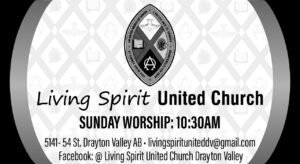
Living Spirit United Church
Everyone welcome. Sunday Worship, 10:30 We are residents of Drayton Valley, members and adherents of
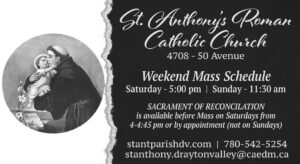
St. Anthony Catholic Church
Welcome to St. Anthony’s Parish Drayton Valley . You are most welcome to join the
Dr. Chris Birchall Dentistry
Share on facebook Facebook Share on email Email Share on linkedin LinkedIn Share on whatsapp
What got you involved in the society in the first place?
I think it was an ad in maybe the Breton Booster, or just a poster around Breton that the Society was in the initial stages of starting a museum in Breton and looking for volunteers to help with establishing the museum. The Society had recently entered into a lease with the then Leduc School Division for the use of the two-room school located on the Breton Elementary school site. The school division had stopped using the building prior to this for school classes, I think the playschool had occupied the building at the last but must have moved from the building as the building was vacant when the historical Society leased it. It needed a lot of upgrades over the years. From reviewing some of the records and minutes of the Society it appears that the topic of establishing a museum had been talked about at various times previous to 1987.
I had always had an interest in history from the time I had been small. Both my father and my mother’s family had been longtime residents of the Carnwood and Moose Hill area. They both had homesteaded in the early 1920’s. As a young child, I can remember asking my mom to tell me about the “olden days”. So when this opportunity came with the Breton museum I thought here is a cute little project that I can volunteer a couple hours a month to help them out. I can paint a wall, do minor carpentry, well it has taken on a life of its own in the years since then. I didn’t know anything about what it took to operate a museum… none of the people involved did. It was a steep learning curve for everyone. It has become clear over the years/decades since then that there is much more to running a museum than putting some old items out in a cabinet or on a shelf for people to look at to be a museum. It’s about having the artifacts help tell a story.
How has black history impacted the Village of Breton and the place it has in Alberta’s history?
The Board of the Society, soon after establishing the museum,received some advice from the Historic Resource’s Branch of the Alberta government about starting a museum. One of the things they talked about was to determine what themes /stories you want to tell in your museum. I believe the Board of the time did a good job in considering this question. While most small rural museums focus on the settlement history of their community and Breton was no different to some extent, the Board settled on 4 themes. They asked themselves what area of the Breton district history can we focus on that will set us apart from the museum down the road.
The first theme determined was the history of the Keystone community, established by African American settlers from Oklahoma and a few other states that migrated to Alberta from about 1909-1912. While this initially followed the settlement story of homesteading it has become a much more complex story that goes beyond just the hardships of establishing a homestead and life at the time in Alberta, and the Breton community. When the museum started documenting this story 30 some years ago the story of black history in Alberta was scarcely mentioned. What I have come to realize and appreciate, there is much more to this story than a small group of early settlers. This is a story about the immigration policy of Canada at the time, and how many segments of society pushed back against this group. It started to become clear that the story of Canada as a kind nation that welcomed all groups of immigrants with open arms has started to unravel as we start to research the topic deeper. There have also been success stories that need to be told. The story of Keystone, and the other communities in Alberta and Saskatchewan settled by this group is more than just local in scope. It is part of Alberta history, as well as Canada’s story, with connections back to Oklahoma and the reason this group was leaving the State.
We try to ask visitors to the museum what brought you to the museum today. A vast majority will say they wanted to learn about the black history of the area. This theme has definitely brought the museum, and by extension the community a higher profile beyond just the local community.
The second theme decided on, was the lumbering industry which played a significant role in the development of the area until the late 1940’s. It was the primary economic driver of the area, once rail service was established in 1926.
The third theme was Agriculture, while this was a more generic theme the Board’s focus was to tell the story of the Breton SoilPlots and the challenges of farming on gray wooded soils. This theme has yet to be fully developed by the museum.
The final theme was Community, this encompasses a lot of different elements and like all the themes is ongoing and can vary from year to year.

The Drayton Valley Air Cadets Squadron 733 will be celebrating their 60th anniversary this year with a barbecue open to the public.
Lamont Cardinal, the chair of the parent committee for the cadets, says that the cadets are technically turning 63 this year, but the original celebration for their 60th had to be cancelled due to the pandemic.
“We’re now essentially celebrating our sixtieth anniversary,” says Cardinal.
Cardinal says the barbecue will be held on Sunday, April 21 at their headquarters at 5524 Industrial Road. Only a month later, the 38 cadets will also be attending their Annual Ceremonial Revue, where they will be inspected by a member of the Canadian Military.
While the history of the Air Cadets goes back to the 1940s when the Canadian military recognized they would need more trained pilots for the war effort, Squadron 733 wasn’t established until April 22, 1961.
Originally, only boys were able to join the Cadets. However, when the Canadian Government amended legislation changing the word boys to persons in 1975, girls were allowed to enroll.
Captain Tanya Hunt says over the years there have been many people involved in the Cadets.
“Since the formation of the squadron there have been many commanding officers that have helped form and mold the 733 Drayton Valley Air Cadet Squadron we have today. Capt Matt McCullach, Capt Pat Turner, Capt Brian Torpy, Capt Lorna Luchyk, Capt Randy Romanchuk, Capt Paul Spurrell , Capt Mitch Krasey, Capt Heather Guard, Capt Kate Simpson, Capt Gerald Landers and the current commander Capt Tanya Hunt,” says Hunt in an emailed statement.
She says the barbecue is also about promoting the cadets in the community.
While the cadets do follow many military style rules, they are a separate program than the Canadian Armed Forces, says Cardinal. Given that they are Air Cadets, the members spend some of their time focused on flying.
Cardinal says throughout the year, the parents and members fundraise to pay for cadets to go gliding at least one time. They also do some flying in small engine planes.
If the cadets stick with the program and complete all of the ground school and complete all of the training, Cardinal says they can get their private flying license once they graduate from the program. There are also some scholarships that are available through the Air Cadet League of Canada.
He says it’s also a great program to teach kids responsibility and discipline. All of the cadets are given their own uniforms and are completely responsible for the maintenance of that uniform. That includes sewing on patches, washing and ironing the uniform, and shining their boots.
“It’s all about the self-motivation and self-reliance, along with working as part of a team,” says Cardinal.
He says the cadets are always accepting donations, and all funds donated will go toward programs for the members.
Next Week’s News
Are you a local looking for things to do in and around Drayton Valley, or Brazeau County. Our award winning editor Graham Long, has got your covered in his weekly summary of things happening in Drayton Valley. Have a read of Next Week’s News each week to get an idea on how to plan your, week.
Next Week's News: April 4, 2024 Column
Time for a little music! On April 20 MJ lives! The Michael Jackson experience featuring Barry Dean comes to the Max Centre in Drayton Valley.
Still on the subject of anniversaries, the Drayton Valley Air Cadets are celebrating 60 years in the community. Head to 5524 Industrial Road between 1 pm and 4 pm April 21 where there’s a free (!) barbecue along with memorabilia highlighting the history of the cadets in Drayton Valley and information about the cadet program.
Earth Day is April 22. It’s an annual event to demonstrate support for environmental protection. First held on April 22, 1970, it now includes a wide range of events coordinated globally by Earthday.org including one billion people in more than 193 countries, according to information I just cut and pasted from the internet.
And don’t forget that April 30 is the deadline to file your taxes. Unless you want to make the Canada Revenue Agency mad, which you probably don’t.
The Free Press summer travel guide will be heading your way sometime around the end of the month, so keep an eye out for that.
That takes us to May, which means it’s Rodeo time! The Drayton Valley pro rodeo takes place May 3 to 5 at the Omniplex. And after the rodeo on May 4, stick around for the annual Horses and Hooch Cabaret, presented by the Lions Club. That’s at the MacKenzie centre starting at 7 pm. There’ll be live music, a food truck and more.
You know it’s spring time when there’s free tipping days at the landfill. This year that’s May 3 and 4 and May 10 and 11. The usual restrictions apply, and you do need to be a resident of the town of Drayton Valley.
The Black Gold Brute obstacle race isn’t until June, but registration is now open. And if you’re thinking about entering this is probably a good time to start training.
And that’s your lot for this week.
Cut out the middle man and get your Drayton Valley and District Free Press directly to your email inbox.
Get more activity ideas in for the Drayton Valley and Brazeau County region in our Brazeau and Beyond Travel Guide.
Head over to our travel guide page to download yours today.
Click here: Brazeau and Beyond
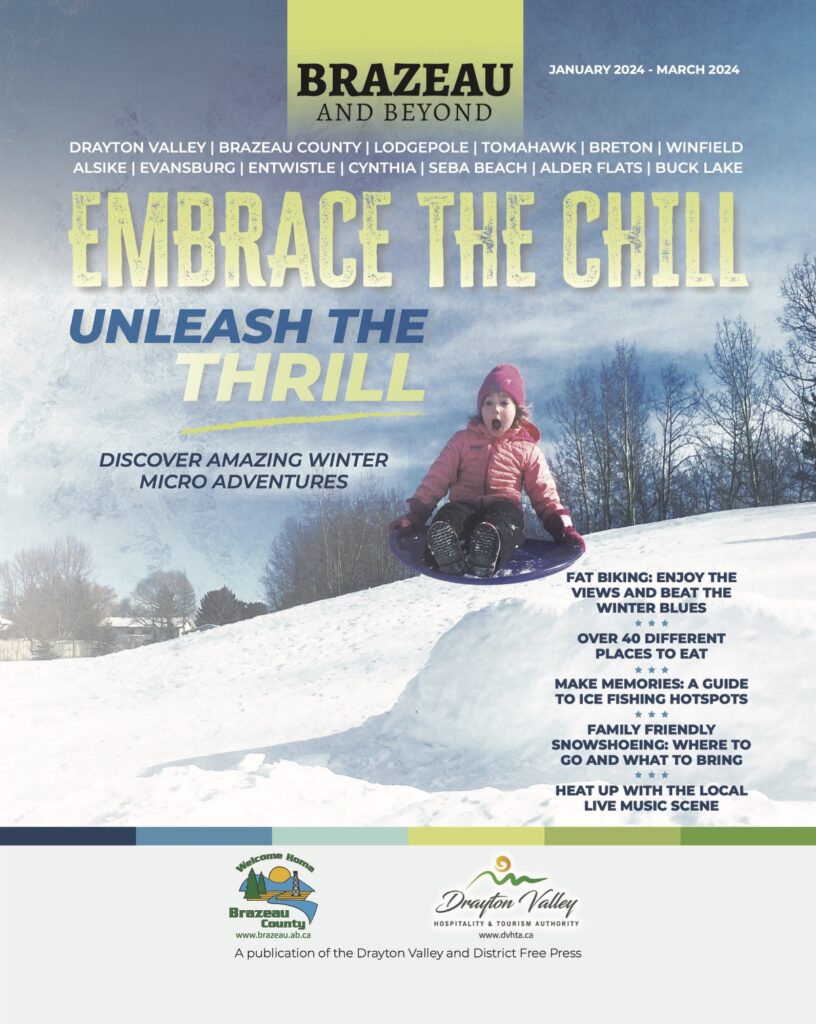

Staff Sergeant stepping down
The Drayton Valley RCMP Detachment is looking for a new Staff Sergeant as the current man in charge, Troy Raddatz, heads into retirement.
Raddatz started his time as Staff Sergeant in Drayton Valley in mid-May 2023, just as the community was dealing with the Buck Creek Wildfire. Raddatz hit the ground running with the detachment, and during his time the crime stats have been on a downward trend and the RCMP have been more visible in the community.
Before he was Staff Sergeant in Drayton, Raddatz had spent time in Breton, where he started his career in 2004. In 2010 he moved on to work with the canine unit where he eventually became the program director for dog services in 2017.
In 2023, he decided to make the lateral move to his position in Drayton. He and his wife had life-long friendships from the area, and he was impressed with the detachment in Drayton.
“I really enjoyed my year here, and it was good for my family,” says Raddatz. “We had planned on staying longer, but through a change in our family situation, we decided it was time to retire.”
One of Raddatz’s goals when he first started was seeing the detachment moved to a larger building. While Raddatz has been working diligently on achieving that goal, he says it’s been difficult to get the go ahead from the division.
However, during his last town council meeting report, Raddatz told council that he has been advised that there will be three trailers added to the detachment. He says he has been working with the division to finalize the design for the changes, and he anticipates the trailers will arrive in 2025/26.
“We’re trying to buy ten years for this current detachment,” says Raddatz.
He says during his time in Drayton he’s valued the support that the detachment has received from both the Town and Brazeau County, as well as members of the community.
And Raddatz says he has been happy with the detachment and feels like he’s leaving it in good hands.
“Drayton Valley has a really incredible detachment, and the community is in good hands there,” says Raddatz.
His last day as Staff Sergeant is April 11, and in the meantime, Sergeant Ryan Hoetmer will be the Interim Staff Sergeant until a replacement is found.
Concern over Winfield School
The parent advisory council at Winfield Elementary are worried about the future of their school.
Carolyn Schwindt, the president of the school’s PAC, says some motions that the Wetaskiwin Regional Public School Division recently put forward in their board meeting are concerning.
Schwindt says this year the division has a new superintendent, Mike Wake, and Schwindt says that he’s been great to work with so far. However, she doesn’t agree with some of the ideas brought forward for calculating when a school should be closed.
“There’s always been discussion in Wetaskiwin Public Schools on the potential need for closure,” says Schwindt. “We’ve got low enrollment across the board in all schools.”
Schwindt says there are many factors at play when it comes to the enrollment at Winfield. Currently, the school has 63 students and also houses the community’s public library. Schwindt says there are multiple programs that use the school, such as the playschool and gymnastics club.
The motions that were put forward suggested that the school be closed if enrollment was below 60 students. Schwindt says if the number for closure is that close to the number of currently enrolled students, no one can really be certain if the school will stay open from year to year.
She worries this could affect whether teachers look for positions at the school. Or perhaps parents would move their children prematurely because the school might close.
She says since the pandemic, there has been an increase in the number of home-schooled students in the area, which has lowered student enrollment. Allowing families to pick a school of choice for their children also affects the numbers in the schools.
Schwindt says Wake has been focusing on the reason for low numbers and has been actively looking for solutions to the problem.
His most recent proposal was to ask the provincial government for funds to build a K-12 school for the Buck Lake family of schools in the Alder Flats area. Another area that was considered was the Pigeon Lake family of schools becoming consolidated.
But Schwindt says those two school families have schools spread out over a large area. Already, some students are looking at bus rides that are an hour or more in some of those areas. Should the schools be consolidated, many of those bus rides could increase significantly.
As it is, students who choose to go to high school in WRPS rather than the Breton High School with the school of choice option, have to travel to Buck Mountain High School. The distance from Winfield to the Buck Mountain school is 27 kms, and takes about seventeen minutes of straight drive time.
Another thing Schwindt worries about is what would happen to the community should the school be closed.
As of 2011, Winfield had 244 residents. One of the major employers in the area is the school and its closure could have a ripple effect throughout the community.
Schwindt says she has spoken to Wetaskiwin County Council about the issue, but there is little they can do.
Kathy Rooyakkers, the councillor for Division 6 in Wetaskiwin County, says the idea of the school potentially being shut down next year worries her.
“It will affect them big time,” says Rooyakkers.
Rooyakkers says that unfortunately the County cannot stop anything WRPS plans to do. She says they have the opportunity to meet with the division a few times a year, where they discuss issues that concern both the County and the division, but all they can do is give their opinions about the situation.
“At the table, we don’t get a decision,” says Rooyakkers.
She says it’s frustrating, but there isn’t much they can do. At this point, she says the County has not discussed what they would do should the school be closed. She says there may be some other options that could be considered, such as creating a charter school, but council can’t make any changes…
Full story in the April 4, Free Press. Become an email subscriber at www.dvfreepress.com.
County spends on fire suppression
Brazeau County is set to spend $560,000 to improve fire suppression in two underserved parts of the municipality. Last week council approved $250,000 for a 210 cubic metre concrete water tank in Lindale and $310,000 for a similar tank and water well in Buck Creek.
The move is the result of a study conducted last year that outlined gaps in water sources for residential fire suppression. Lindale and Buck Creek were identified as areas that did not have access to an adequate source of water that was close enough to be practical in the event of a blaze.
According to the County, the Lindale tank will replace the current holding tank, and will provide year-round fire suppression for structure fires as well as assisting in case of wildfire in the area. A water well and the below ground tank near the Buck Creek lift station will provide fire suppression for structure fires as well as assisting in the event of wildfire. Water will be available all year round with no risk of freezing. If drilled to a lower aquifer, the water well will not place residents’ wells at risk.
Meanwhile, with the wildfire season now underway, CAO Kent Edney said that Incident Command System training, which is offered by the Government of Alberta, was being rolled out to staff. Edney said ICS 100 training was now mandatory for all employees. ICS 200, 300 and 400 were also being provided to those who are eligible. Councillors were scheduled to attend ICS 402 training, which is designed for elected officials, last week.
Two training sessions for public contractors held last month have enabled the County to draw up a list of “first calls” in the event of an emergency. The sessions sparked considerable interest, with 55 people attending in Breton February 21 and 112 in Drayton Valley two days later.
A review and update of the County’s Municipal Emergency Plan is expected to be completed by early April.
Tax help is here
It’s tax time in Canada, and while the costs of having taxes done aren’t a big deal to some, for others it can be prohibitive.
Gina Matalski, a tax specialist at GM Accounting and Tax Services, is working with Drayton Valley Family and Community Support Services to help those who struggle to afford having their taxes done.
Matalski says the Income Tax Program has volunteers in the community, who have received training provided by the Canada Revenue Agency, do the tax returns. She says people drop their information off at her office, and then a volunteer comes to get the information and files it.
“Then, if I don’t have time to do them myself, I contact the volunteers and let them know that there are some to be picked up,” she says.
Right now there are seven volunteers who have stepped forward to help out, but Matalski says the more people they have volunteering, the faster they can get things done.
While the program aims to help as many people as they can, Matalski says there are some restrictions for who can use the program, and only personal taxes can be done. She says anyone who has employment expenses, or anything outside of the norm, would not qualify for the program.
“It’s basic, basic income tax returns,” she says.
Individuals who wish to use the program must have less than $35,000 in taxable income for the year. Couples can use it if they make less than $45,000 and families cannot have more than $52,000 in earnings.
“This is my second year for the free tax program,” says Matalski, “but I’ve been doing personal tax returns for five years.”
Matalski says she signed on to the program because she wanted to help the community out.
She says the price for doing personal taxes can be high, depending on who is being used to file the taxes and it’s not fair for low income earners.
“When individuals and families that are already struggling to make ends meet every day have to go and pay between $150 and $200 to have a tax return done is ridiculous,” she says.
She said last year the program helped 500 individuals with their taxes.
Those who qualify for the program can drop their tax information off at 5136 – 54 St. on Tuesdays and Thursdays from 9 a.m. to 5 p.m.
Over the years of managing the museum what is the most interesting artifact, or fact that you have stumbled across as it pertains to the black community or the area?
I had to think about this question for a while. There are two or three artifacts that piqued my interest and we can connect to the families that settled Keystone. One is a mule shoe found on the property originally settled by Rolla Ramsey. It was turned up in a field in later years, long after the Ramsey family had moved from the community. We can see from some records that some of the families owned mules which they brought from the US with them. Mules were often used in the south as they were tough, and for their size could pull more.
The second is part of a child’s toy, it is a metal horse that likely had a wagon or something more to the toy. It too was found in a field in later years, on property owned by another black family of the area. While it is only partly there, we can imagine there was a little boy who likely prized that toy.
The third is a small rubber stamp that was found in the Funnell School/Community Centre when they were cleaned up about 10 years ago. The stamp says Keystone. What purpose it was used for we don’t know, but it must have been made for a purpose.
From an archival perspective, I think the minute book from the Good Hope Baptist Mission is wonderful, especially the opening entry. “We the people of township 48 range 4– west of the 5th meridian, met together at Wm Allen’s house at 11 o’clock on September 10,1911 for the purpose of organizing a church.” The museum is very lucky to have these records, thanks to Mrs. Emma King who had a number of records pertaining to Keystone and passed them on to Mark and Gwen Hooks who donated them to the museum when it was established.
The last archival item isn’t something the museum has, but comes from the homestead records held at the Provincial Archives of Alberta. These records show who filed on a homestead, and contain a variety of information about the individual. The first form that every person who filed on a homestead filled out had the usual information you would expect: their name, the land location, if they were married and had a family, their address, their nationality and if they were a Canadian citizen. What I found interesting was that on many of the homestead records filed by the black settlers they listed their nationality as American, which they were, but down in the corner of the form a government official has written the word Black, Colored or Negro. They were being identified beyond what any white homesteader was. Now we don’t know if they were being directed to certain areas for settlement or for some other purpose.
Why do you continue to be involved?
There are days when you wonder if anyone notices or cares what the museum is doing, but then you get the days when you meet visitors and you can help them and the gratitude they have to the museum for taking the time to help. Or people commenting on how much they enjoy the articles I write for the Breton Booster, then you know what you are doing does make a difference. Isn’t there a line in an old Joni Mitchell song that says “you don’t know what you got till it’s gone”.
What keeps me coming back is what I will discover next week or next month that will add to the story. It’s like having a box of jigsaw puzzles and the box contains numerous puzzles, and each puzzle has some of the pieces but not all of them.
Anything else you feel is important to talk about?
This year will mark the 45th anniversary of the formation of the Breton and District Historical Society. While their original purpose was to publish a community history book. I think a lot of credit has to go to the people who were involved in the formation of the Historical Society to have the vision to start preserving the history of the community. If they hadn’t started the Historical Society then, would there be a Breton Museum. The majority of those individuals have now become part of the community’s history.


Air cadets mark 60 years
The Drayton Valley Air Cadets Squadron 733 will be celebrating their 60th anniversary this year with a barbecue open to the public.

Next Week’s News
Are you looking for things to do in Drayton Valley, Alberta. Our next week’s news will inform you on what is happening in and around the area for locals to check out an attend.

Staff Sergeant stepping down
The Drayton Valley RCMP Detachment is looking for a new Staff Sergeant as the current man in charge, Troy Raddatz, heads into retirement.

Concern over Winfield School
The parent advisory council at Winfield Elementary are worried about the future of their school.








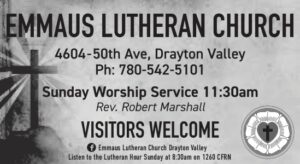
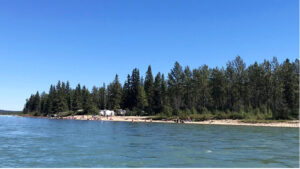


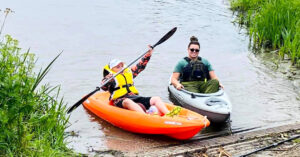


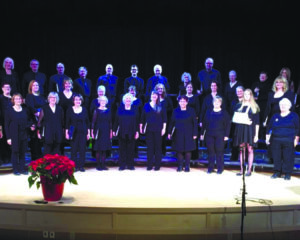


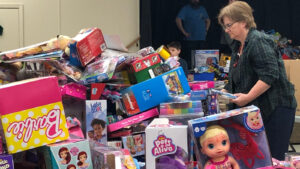
I am very pleased that there is a Breton Museum, and that Allan Goddard took it upon himself to keep the legacy of African Americans, who came up from the USA, alive! My dad’s (Glen Lee Harris) sister (Margaret) was married to “Vant’s” brother, (LaVern Hayes)! They lived many years in Breton, and I remember going there, as a child! I am now 71 years old, and living in Burnaby, BC. My father’s family immigrated to Canada in 1919 from Oklahoma! I am proud of my African Heritage, and the history of my people! Thank you to Gwen Hooks, Allan Goddard and all the others who have kept our history in Alberta alive!
Sincerely,
Geraldine Rae Harris